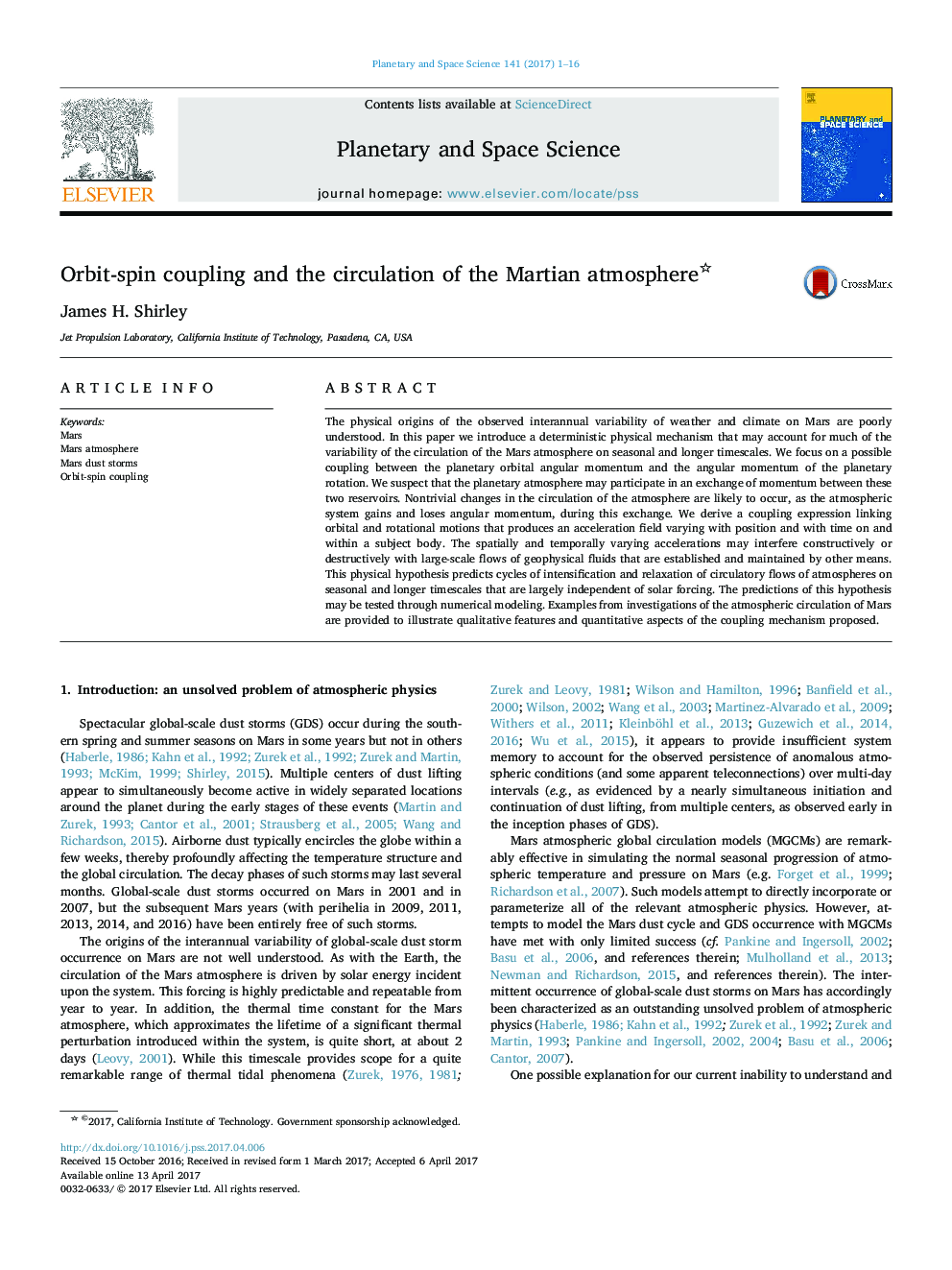| Article ID | Journal | Published Year | Pages | File Type |
|---|---|---|---|---|
| 5488027 | Planetary and Space Science | 2017 | 16 Pages |
Abstract
The physical origins of the observed interannual variability of weather and climate on Mars are poorly understood. In this paper we introduce a deterministic physical mechanism that may account for much of the variability of the circulation of the Mars atmosphere on seasonal and longer timescales. We focus on a possible coupling between the planetary orbital angular momentum and the angular momentum of the planetary rotation. We suspect that the planetary atmosphere may participate in an exchange of momentum between these two reservoirs. Nontrivial changes in the circulation of the atmosphere are likely to occur, as the atmospheric system gains and loses angular momentum, during this exchange. We derive a coupling expression linking orbital and rotational motions that produces an acceleration field varying with position and with time on and within a subject body. The spatially and temporally varying accelerations may interfere constructively or destructively with large-scale flows of geophysical fluids that are established and maintained by other means. This physical hypothesis predicts cycles of intensification and relaxation of circulatory flows of atmospheres on seasonal and longer timescales that are largely independent of solar forcing. The predictions of this hypothesis may be tested through numerical modeling. Examples from investigations of the atmospheric circulation of Mars are provided to illustrate qualitative features and quantitative aspects of the coupling mechanism proposed.
Keywords
Related Topics
Physical Sciences and Engineering
Earth and Planetary Sciences
Geophysics
Authors
James H. Shirley,
